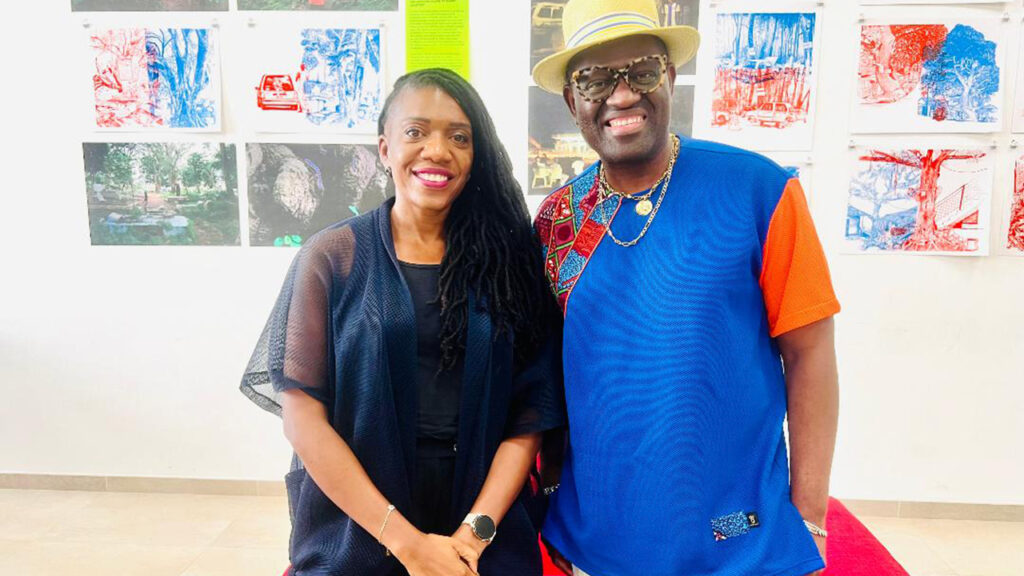 With over 20 years studio practice as a painter and sculptor, Godwin Archie Abia, who is also the founder of Winarc Gallery, is currently expanding his interest in the restoration and preservation area of art. Abia is worried that artists and patrons of art are not giving much attention to preservation and conservation of collections.
With over 20 years studio practice as a painter and sculptor, Godwin Archie Abia, who is also the founder of Winarc Gallery, is currently expanding his interest in the restoration and preservation area of art. Abia is worried that artists and patrons of art are not giving much attention to preservation and conservation of collections.
“Every piece of creative work such as art, car, house, among other everything, even human being needs to be maintained,” Abia argued during a chat inside Winarc Gallery, Ikeja, Lagos. “If not taken care of, works of creative efforts will lose their original content, aesthetics and value.” Arts, he stressed, “need to be preserved and properly maintained.”
The artist who is well-known for his bone collage – a medium he worked on for nearly two decade – traced the challenges of Nigerians in preservation to absence of maintenance culture as a national malaise generally.
“As a people, we lack maintenance culture in this country and this has been extended to visual arts,” and stressed that if this trend extends deep into art, “the works of masters that were produced over the years would lose their value.”
Among some of Abia’s jobs in restoration is a fiberglass work at Lagos Port Complex, in 2001/2002, a job, he said was done originally by another artist. But there are quite a number of art works in public spaces that need restoration.
“We have looked around and noted some sculptural works that need to be restored as well as damaged works. I assure that if given the opportunity, we are going to restore them to their original state.”
He shared his experience as regards the difference between indoor and outdoor maintenance of works. “Maintaining outdoor works of sculpture can be very challenging to coflectors given the usually very large scale and design of outdoor works.
“General maintenance starts with documentation of the works which makes for easy record keeping as a loose leaf binder entries for each sculpture’s yearly maintenance. Logs and initial examination can be kept in each section for easy reference in case of organisation and individual that has a large collection of works.
“For most sculptures, a yearly maintenance is regular washing with light lose pressure using a dilute solution of mild detergent, followed by ware rinse. Using rinse soft nylon bristle brushes or sponges to apply the detergent proper washing and wax in maintenance will also provide the opportunity to examine the sculpture. Streaking are other evidences in corrosion, so balancing, structural problems or damage should be documented.
“The environmental conditions surrounding outdoor sculpture can affect its condition. For example, I did a massive sculpture in Apapa area of Lagos in 1996, but due to lack of maintenance we have to do another new one in 2013. And the recent one is yet to be unveiled because of the atmospheric nature of Apapa; those works need to be coated every two years to prevent damage.
“Encroaching vegetation, which may encourage bird, animal, vandalisation activity, should be cleared. Holes in sculpture should always be kept clear to allow water drainage. Again my honest advice: whenever possible, discourage the public from touching or climbing on outdoor work of art because the applied surface coating are easily scratched and will be worn away by excessive handling. Natural barriers such as landscaping plant or gravel to discourage skateboarders); adequate lighting at night, security patrols can reduce the need for expensive repairs.
“Also, the protective coating for outdoor job; many sculptures, especially metal ones can benefit from using ‘sacrificial’ protective coatings. An inert, transparent coating is applied over the finished sculpture which can be removed (without damaging the art work) and replaced as it becomes dirty or worn.
“Regular application and renewal of protective coating can be cost–effective means of prolonging the life of the sculpture, since they are much less intrusive and expensive to replace or adjust than are the artist’s original surfaces.
“Also, wax is common, easy and effective choice for protecting metal works and other materials both indoors and outdoor jobs. It is used on most bronzes and some painted sculpture protective wax coaling are expensive and easily reversible but are not as durable as harder resins or varnish coating.
“Wax coating should be renewed regularly (once or twice a year depending on the condition). An application of wax is a relatively safe and simple process. A hard, transparent paste wax should be applied thinly and evenly. Excess wax will build up.
“In some instance, harder coatings are more durable than wax maybe needed. A mirror bright finish may require greater protection. For example, a sculpture in accessible site could make yearly maintenance difficult. Acrylic resins, developed for outdoor use are recommended in such cases, unlike wax resins.
“Indoor jobs are easy and cost effective to maintain be it oil paint, mixed media or bone collage, among others. Different methods and technique are used or apply. Example is the way to preserve or maintain bone–collage; watercolour or oil paint are different and so others, which is the reason it requires a professional to handle them.”









